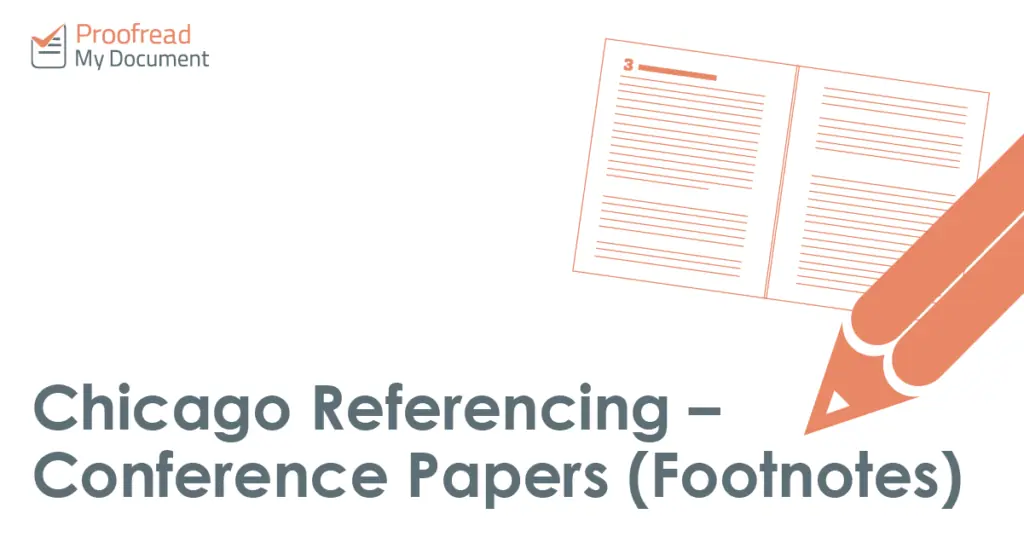Secretly, academic conferences are just massive parties. Academics gather to drink, dance and do various naughty things they don’t want their students to know about. And to keep anyone from realising, they publish conference proceedings to make it seem like they were working.

(Photo: MsSaraKelly/flickr)
Nevertheless, the papers published in these proceedings can be useful if you’re researching an essay. As such, here’s how to cite a conference paper using Chicago footnote referencing.
Footnote Citations
The first citation of a published conference paper should include the following details:
n. Author’s Name, ‘Paper Title’, in Title of Proceedings, ed. Editor Name(s) (Place of Publication: Publisher, Year), page number(s) for cited section.
You can also cite an unpublished paper (e.g. if you find a conference paper available to download from a university or academic website). The format for this is slightly different:
n. Author’s Name, ‘Paper Title’ (paper presented at Name, Location and Date of Conference), page numbers (if relevant).
In practice, then, citations for published and unpublished papers would look like this:
1. Andrew Wilkes-Krier, ‘Pushing the Limits of Partying’, in Proceedings of the Annual Restorative Exuberance Conference, eds. Stefan Gordy and Skyler Gordy (Ann Arbor, MI: Michigan University Press, 2001), 219-220.
2. Prince Nelson, ‘Millennial Concerns: Increased Party Activity in 1999’ (paper presented at The International Conference of Celebratory Carousal, Minneapolis, Minnesota, 10-12 October, 2004), 24.
Note that the conference name is italicised when it’s part of the title of published proceedings, but not when we’re simply naming the conference for an unpublished paper.
Find this useful?
Subscribe to our newsletter and get writing tips from our editors straight to your inbox.
Bibliography
All cited conference papers should also be added to the bibliography at the end of your document. The information here is similar to the first footnote for both published and unpublished papers, though with a few differences. For published papers, the format is:
Surname, First Name. ‘Title of Paper’. In Title of Proceedings, edited by Editor Name(s), page range. Place of Publication: Publisher, Year.
For an unpublished paper, the correct format is:
Surname, First Name. ‘Title of Paper’. Paper presented at Name, Location and Date of Conference.
As such, the papers cited in the examples above would be listed as follows:
Nelson, Prince. ‘Millennial Concerns: Increased Party Activity in 1999’. Paper presented at The International Conference of Celebratory Carousal, Minneapolis, Minnesota, 10-12 October, 2004.
Wilkes-Krier, Andrew. ‘Pushing the Limits of Partying’. In Proceedings of the Annual Restorative Exuberance Conference, edited by Stefan Gordy and Skyler Gordy, 212-224. Ann Arbor, MI: Michigan University Press, 2001.
We have listed these papers alphabetically by author surname here, which is how a Chicago bibliography should be sorted. If a paper has more than one author, moreover, you should only reverse the first listed author’s names.



